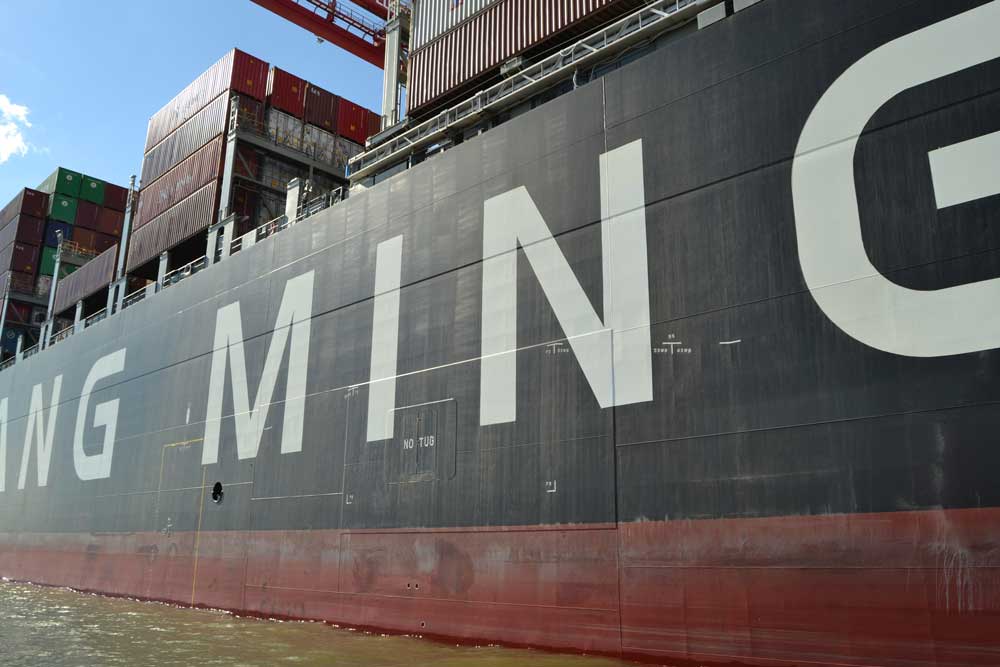The ideas for unmanned shipping are getting more and more concrete. Some projects have already started, experts explained at a recent seminar organized by Shipping Professional Network Hamburg (SPNH). By Thomas Wägener
The idea of autonomous shipping dates back at least to the year 1968, said Carlos Jahn, Head of the Institute[ds_preview] of Maritime Logistics at Hamburg University of Technology (TUHH) and concurrently of the Fraunhofer Center for Maritime Logistics and Services (CML). But in those days the considerations were rather a kind of vision because the technology was not yet advanced enough, he explained.
Now, 50 years later, the technology has seen substantial progress. The main reason is digitalization. Nowadays compiling data for improving businesses becomes more relevant than ever . In general, much more data is processed, more external data has been made available, and the data has become more valuable. Other positive factors are increased hard- and software application speed at lower costs. Furthermore, the technologies of data collection has improved, for example sensors to identify and localize. Also status detection and mobile applications have evolved.
Jahn informed about a project to forecast the Expected Time of Arrival (ETA) for vessels. AIS data is used as a basis. Platforms like Marine Traffic display the current situation, the port of departure and the port of arrival, course and speed, draught and the route in a historical view of the vessels. The goal of this project, which was developed together with Trenz AG, has been to include influencing factors like weather, current, tides, locks or traffic density. Based on all this information, reliable and independent forecasts for ship ETA up to 72 h for the North Sea and the Baltic Sea should be possible. Jahn explained the project as an automated realtime calculation with individual customer adaptability. But »our system is designed for the open sea, because to maneuver in a port area is a real challenge for an autonomous ship«, he added.
Crew planning with SCEDAS
As another example for the scope of data for a more efficient business he showcased the so called SCEDAS Software for crew scheduling and planning. Ite offers efficient crew planning based on complex algorithms and provides the calculation for multiple scenarios and a flexible on-board control. The system is certified by the German flag. The crew planner at the office determines the optimal setup for safe and efficient ship operation along specific preferences such as vessel size , ship type and cargo, and specific route.
This method enables the crew planning for the entire fleet. With the SCEDAS onboard module the crew scheduling would remain flexible in case of unexpected incidents. The onboard module also enables crew members to enter their work hours which updates the compliance level. Everything can be checked and updated. These records are reported on a daily basis to the office and owners to guarantee a consistent overview.
Furthermore, Jahn addressed the EU project MUNIN – Maritime Unmanned Navigation through Intelligence in Networks. The collaborative research project aims at developing and verifying a concept for an autonomous ship which is defined as a vessel primarily guided by automated on-board decision systems but controlled by a remote operator in a shore side control station. One of the challenges was to make sure that the system detects other ships and weather phenomena.
Tests aboard »Hannah Schulte«
After tests at a simulator, the Autonomous Navigation System was tested on very small ships on the Alster in Hamburg. In May 2017 there were sea trials in the Mediterranean Sea on bord the container vessel »Hannah Schulte«. »We were satisfied with the results«, said Lennart Swoboda, Project Manager Finance & Controlling of shipowner Bernhard Schulte. Swoboda sees great potential: »I expect that it has an influence by reducing incidents, not immediately but in the future. Especially for local applications it would be most suitable.« According to Swoboda still a high number of incidents are caused by human errors.
The next step in the feasibility study and concept of unmanned shipping was to develop a Shore Control Center, Jahn pointed out. But even there the human element is still regarded as an important factor. The task was to monitor voyage and vessel and to solve occuring problems. This was realized by large screens. Jahn informed that shortly after the completion of the project the shipyard Daewoo Shipbuilding and Marine Engineering (DSME) ordered a Short Control Center including the Autonomous Navigation System for its test-bed.
Remote-controlled tug
In addition, he explained the idea of the recently started project FernSAMS. Here, a remote-controlled tugboat concept and all components required for its operation are in focus to increase safety and efficiency in ship handling in ports. These range from automated line handover to communication and training programs. Fraunhofer CML and the companies MacGregor, Media Mobil, Marine Training Center (MCT) Hamburg, TUHH and the federal agency »Bundesanstalt für Wasserbau« are involved in the project coordinated by Voith. Jahn estimates it will be completed within the next 2.5 years.
Until 2020 Jahn expects only few individual, specific applications of autonomous vessels in a pilot phase. All of them will thus probably operate on specific routes and ports and will have easy shore access. He also presented examples for current projects mainly in Norway including an on-demand ferry in Trondheim, an electric powered ferry developed by Kongsberg and Pilot-E for auto docking, auto sailing and auto crossing, the offshore vessel »Hrönn«, a cooperation of Automated Ships (UK) and Kongsberg, and the »Yara Birkeland«, a Norwegian project in close cooperation of Yara International and Kongsberg. When the vessel will enter service, it will sail from Porsgrunn to Breivik and Larvik.
For Carlos Jahn the »Yara Birkeland« is the most promising project because here, Yara International, a shipping company, and Kongsberg closely cooperate. The vessel is to be built this year. It will be constructed with a removable bridge. Jahn revealed the idea to operate the ship with a small crew for the first two years to gain experience. Then the bridge will be removed, so that the ship could be operated without a crew from 2020 onwards.
In 2030 Jahn expects that autonomous vessels will be a common approach for specific applications on variable routes and with flexible port calls. Ten years later, he believes autonomous vessels will be employed for many local operations.
Although Jahn doesn’t expect a large number of autonomous ships will sail the oceans. From 2030 on he forecasts a high degree of digitalization and increased automation both of which will enable smaller crews. As for 2040 he believes ships will sail with very reduced crews.
Thomas Wägener



















